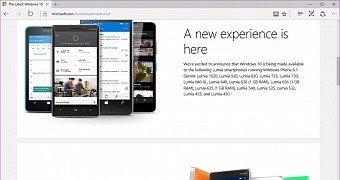Microsoft has just announced that it’s open-sourcing another feature of Edge, the new Windows 10 app that replaces Internet Explorer as the default browser in the operating system.
The company says that it has decided to make the GLSL to HLSL transpiler open source in order to help users who are working on similar WebGL projects, but also to support improvements brought by others to performance, correctness, and interoperability of WebGL.
The GLSL to HLSL transpiler is part of the Microsoft Edge WebGL render and has the role of parsing the GLSL program and checking for security constraints before starting the conversion process that generates the HLSL output.
Microsoft says that this is the “most critical component of the WebGL stack from an interoperability perspective,” and this is why it decided to make it open source. Additionally, the company will publish new scripts and documentation in the coming weeks and months to support development in this regard.
Edge browser won’t be open-sourced, though
And although Microsoft is making some parts of the application open source, this doesn’t mean that the whole browser will follow the same route, and the company wants this to be very clear.
“One natural question following this announcement is whether this signals a move to open-source Microsoft Edge. At this time we have no plans to open source Microsoft Edge or EdgeHTML, but we understand and value the importance of being more open with our roadmap and our core technologies,” the company explains.
At this point, Microsoft Edge is exclusive to Windows 10 PC and mobile devices, and Microsoft has no plans to bring it on other platforms or to release it for older versions of its operating system. Edge is, in fact, used as one of the most compelling reasons to upgrade to Windows 10, and the company will continue to stick with this strategy, which means that there are only slight chances to see it being released on anything else than Windows 10.

 14 DAY TRIAL //
14 DAY TRIAL //